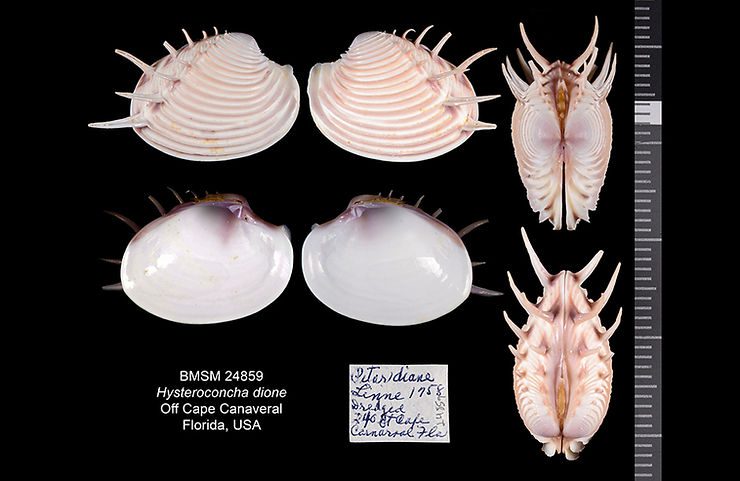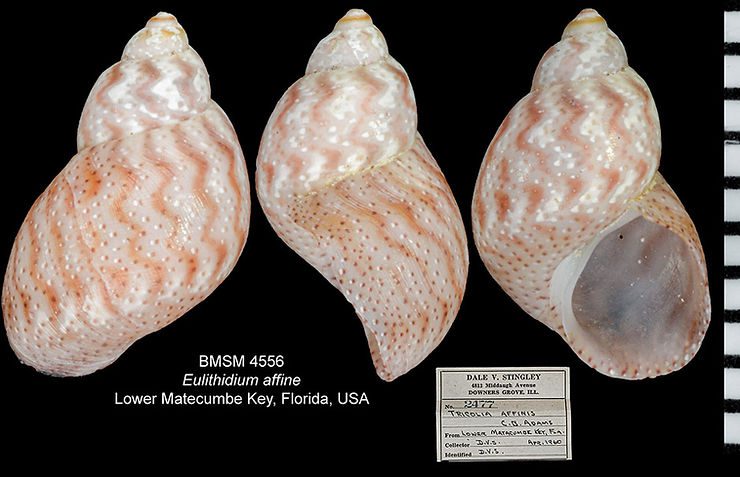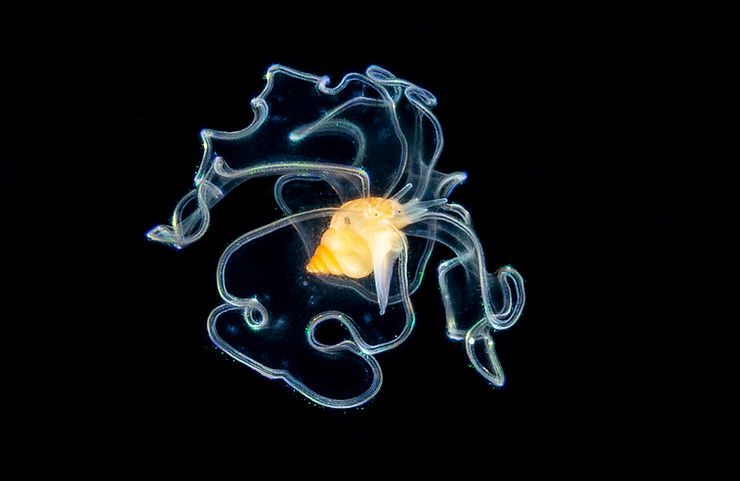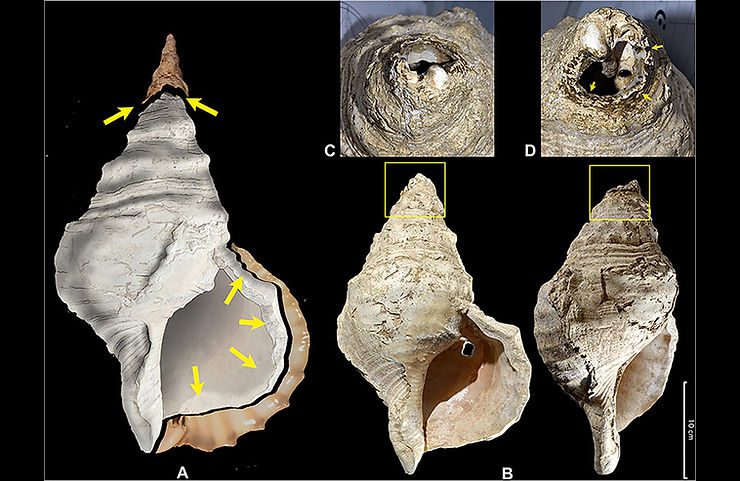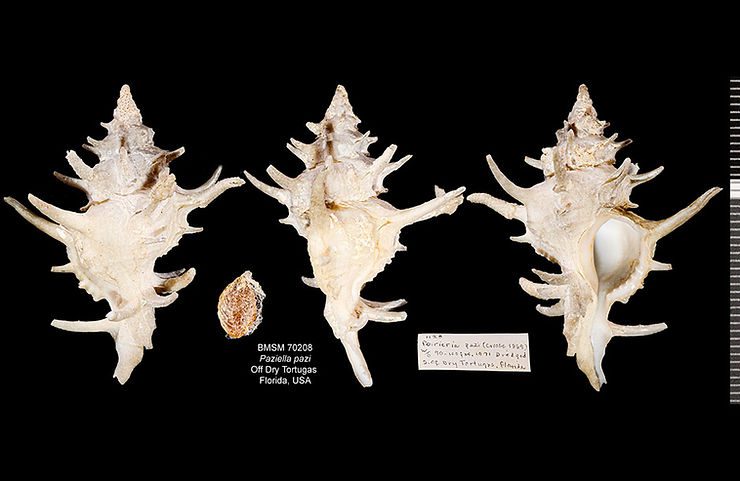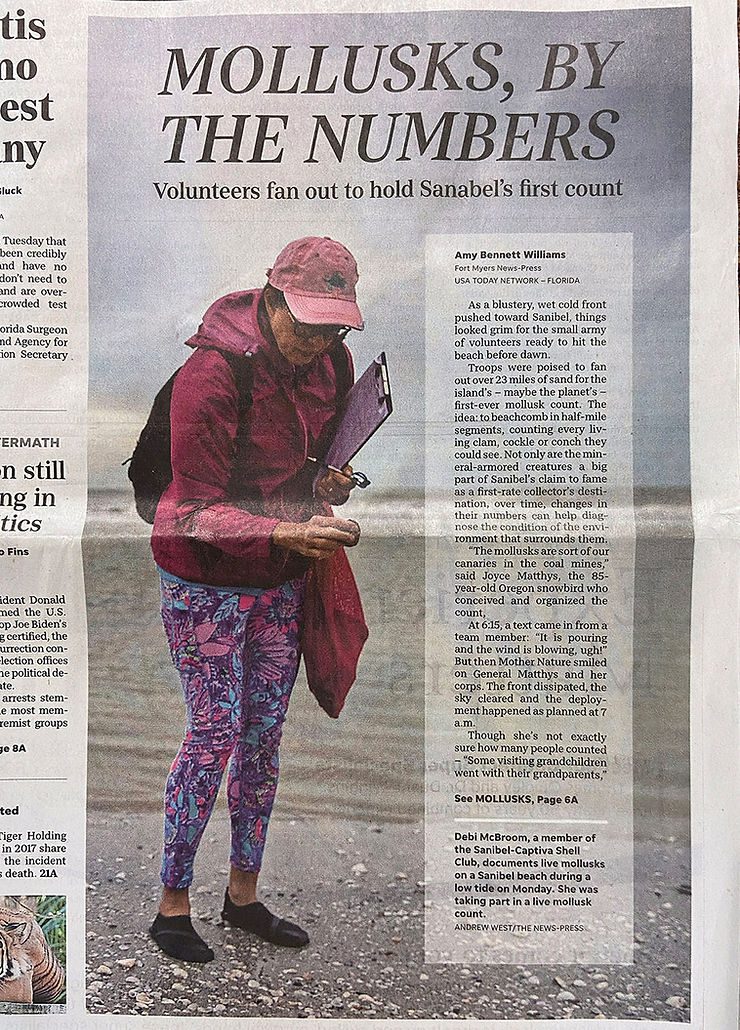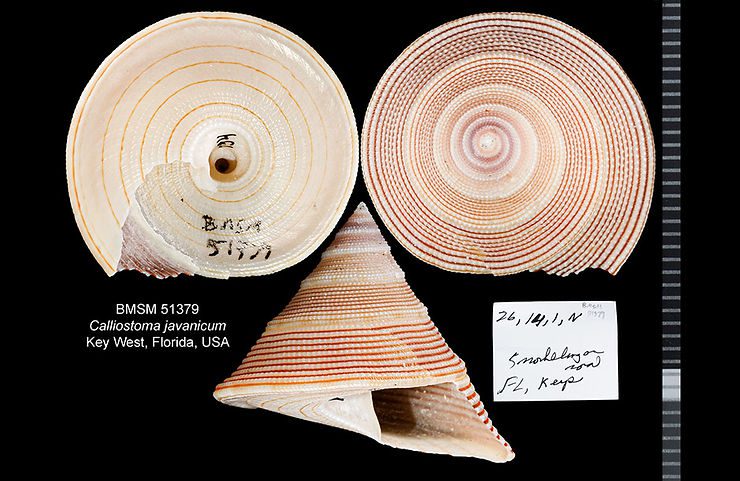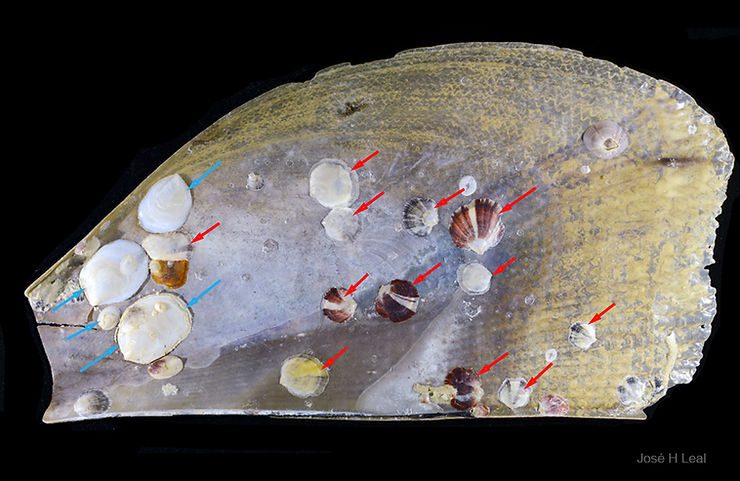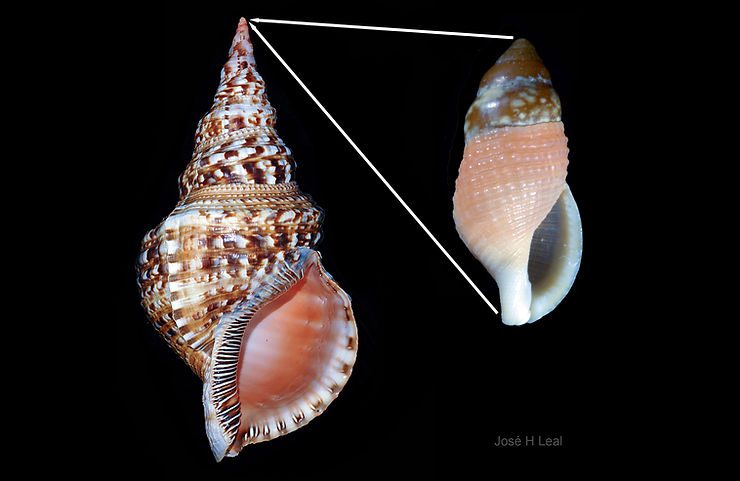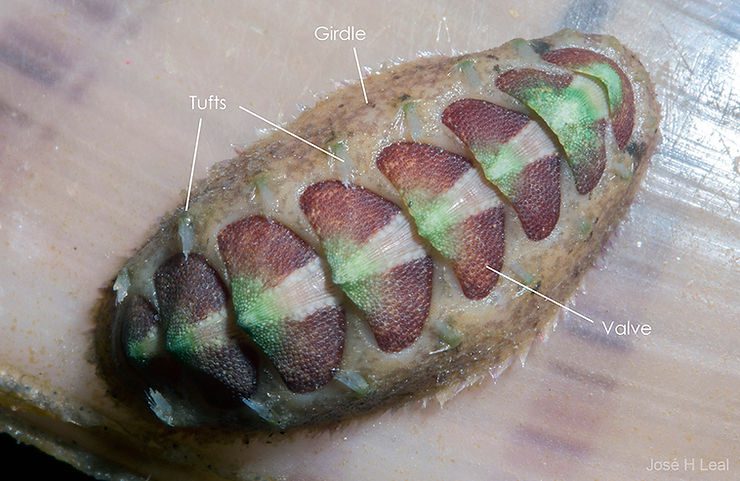
The Striate Glass-hair Chiton
Chitons belong to a class of mollusks called the Polyplacophora (Greek for “bearers of many plates”). Their bodies are covered by eight (rarely seven) shelly plates, also known as valves. The valves are interlocked and surrounded by a leathery girdle. The Striate Glass-hair Chiton, Acanthochitona pygmaea (Pilsbry, 1893), is one of two species of chitons found in shallow-water along the coast of SW Florida. The Striate Glass-hair Chiton may reach a little more than 0.5 inch in size and its valves
